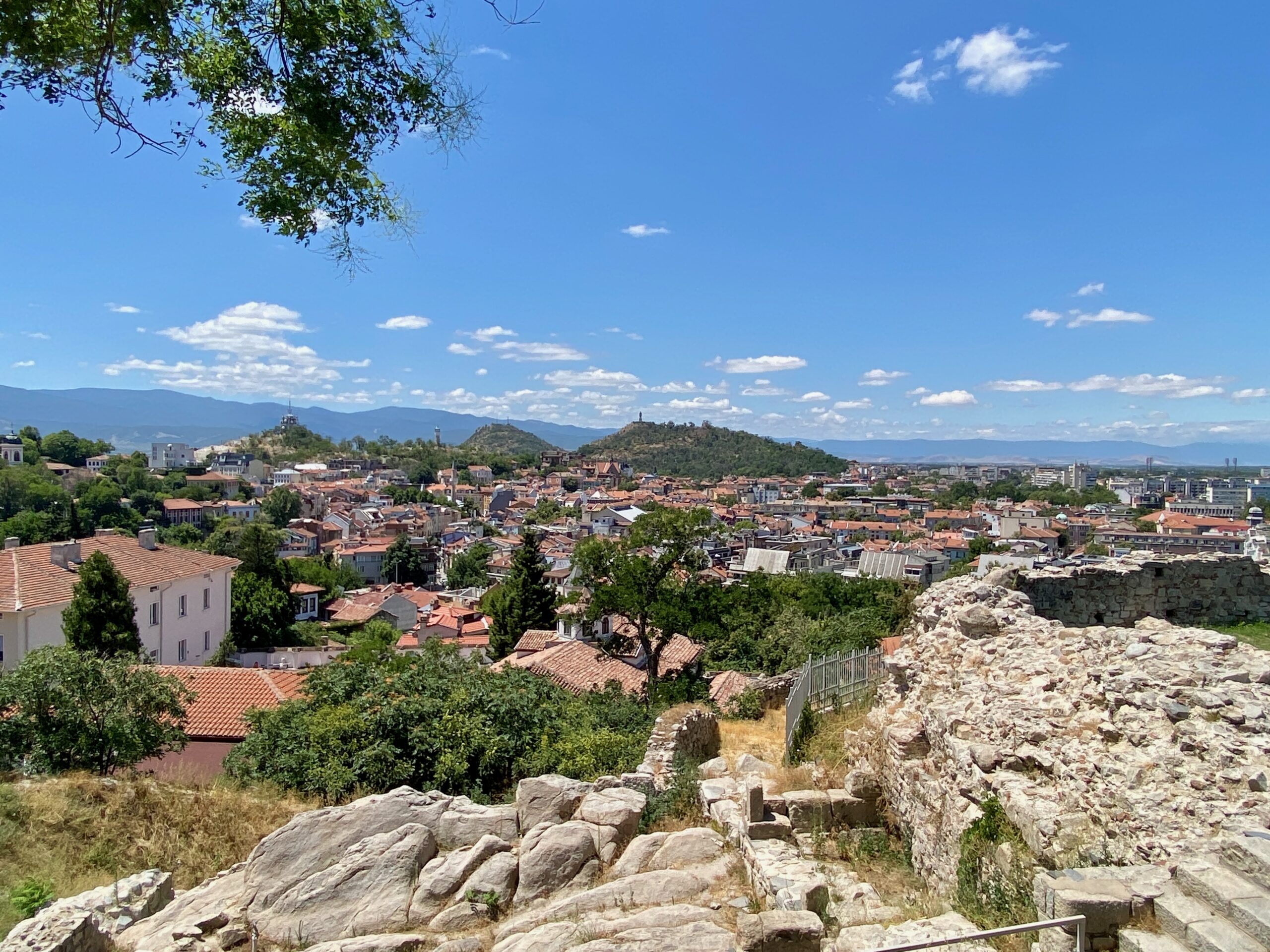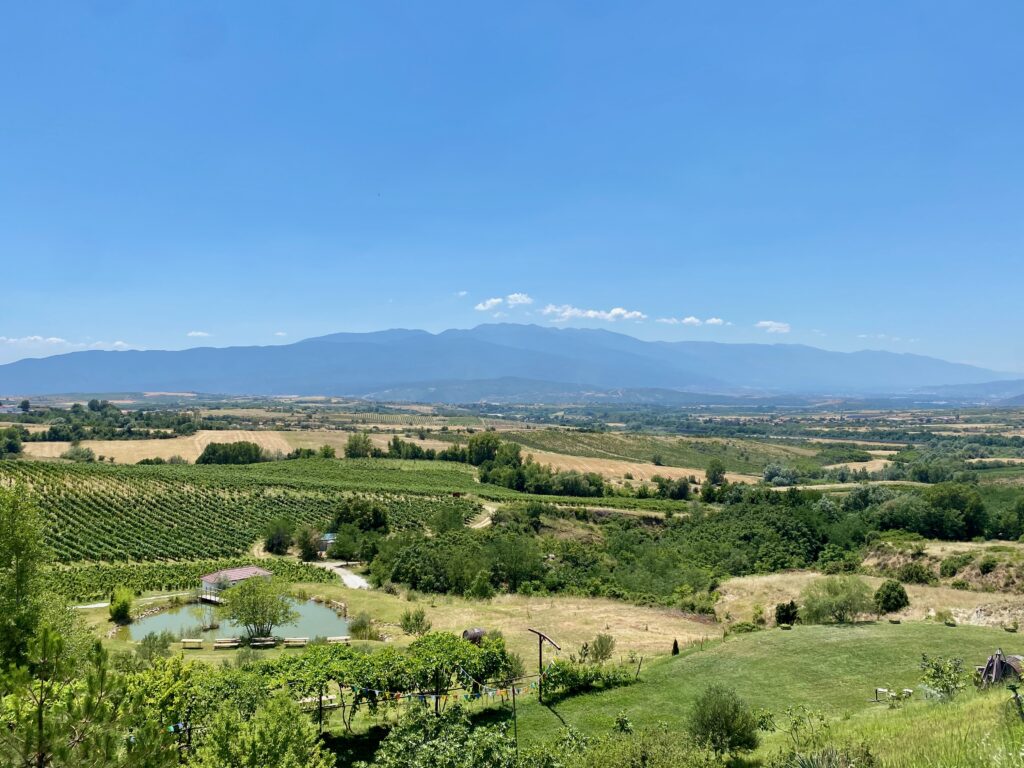We spent several days in Plovdiv, Bulgaria’s second largest city, Europe’s oldest continually occupied city, and my favorite city in this summer’s travels. The city appeared to prioritize and execute a clear vision of preserving and showcasing the ancient Roman ruins while integrating sites into modern city life and demands: for example, a below current street-level Roman stadium with 30,000 seats, 260 meters long and spanning the length of an entire pedestrian thoroughfare, now ends partially excavated in an open-air, charming, outdoor concert space. How refreshing to see a city making a concerted effort to pedestrianize streets and facilitate safety and comfort in the center.

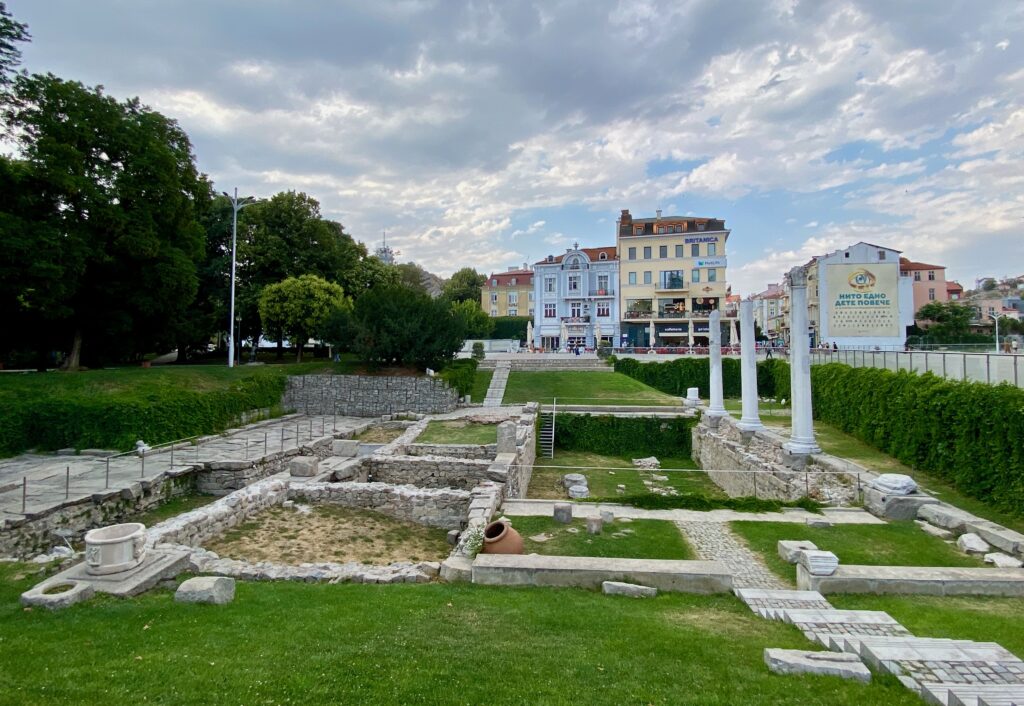

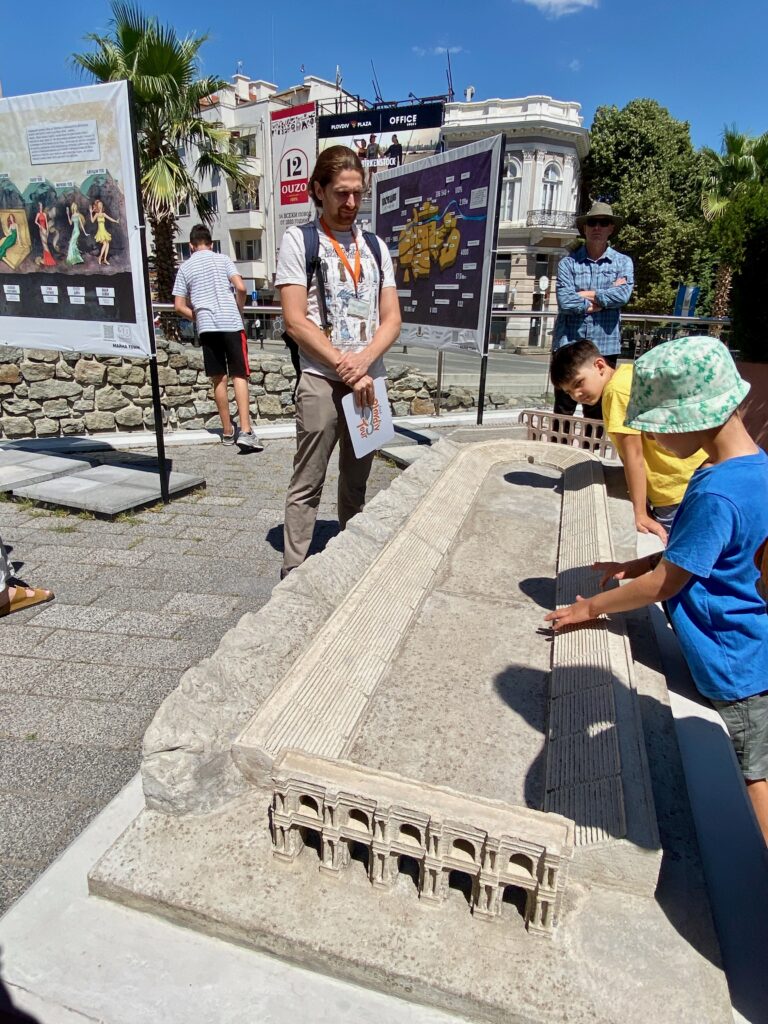
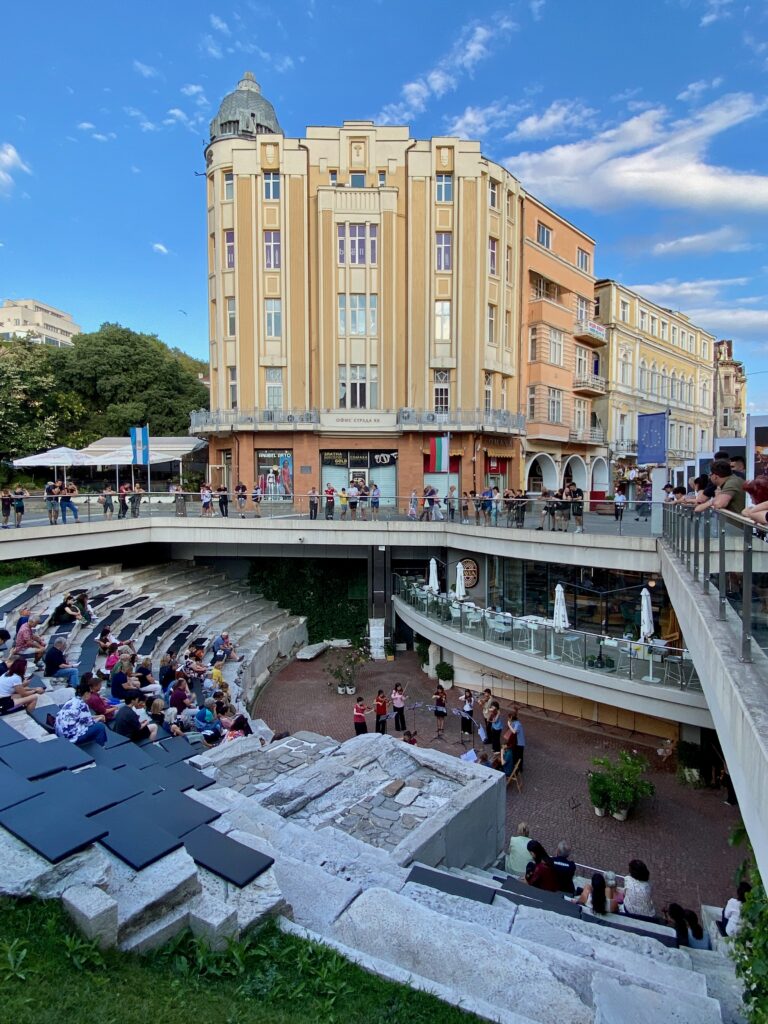
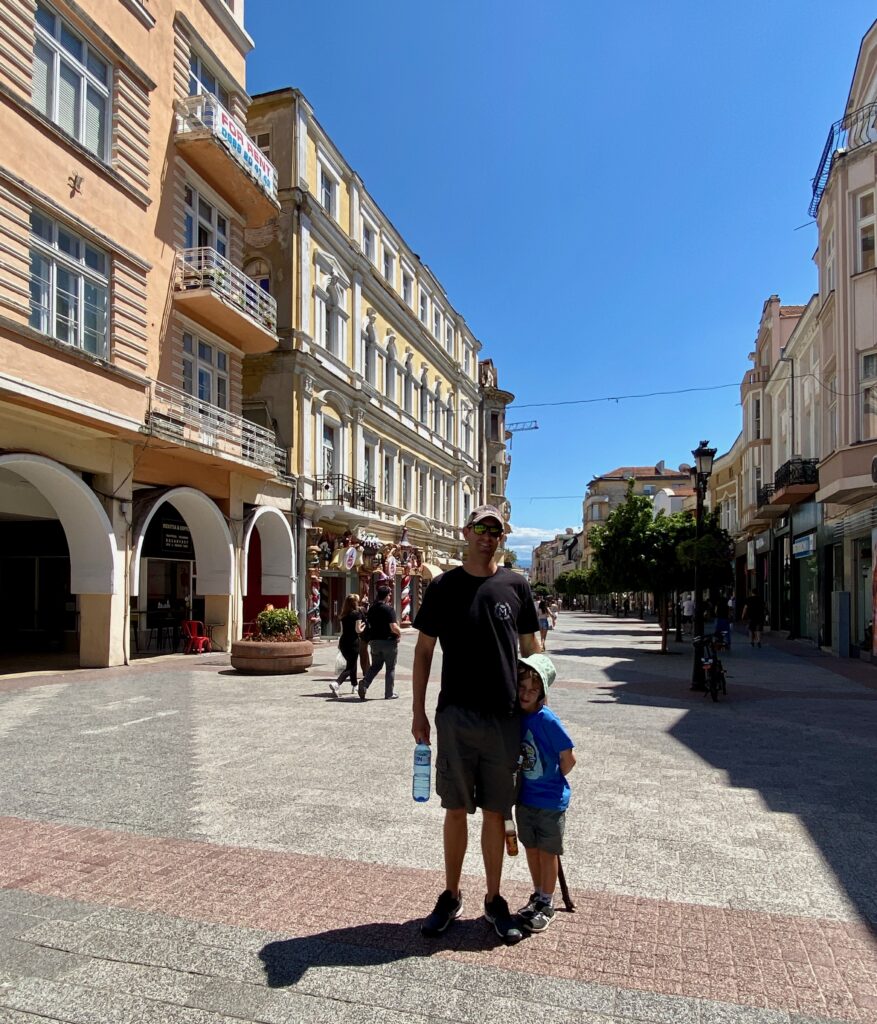
We stayed in a perfectly located Booking.com apartment bordering Tsar Simeon Garden Park, with the “Singing Fountains” and an excellent playground adjacent to a the Central Park fusion restaurant. We gained a well-rounded introduction to the city’s history and tourist highlights via the Free Plovdiv guided tour, which was just as good as the one we did in Sofia earlier in the trip. You’ll want to spend more time exploring the Ancient Theatre of Philippopolis, which now hosts outdoor concerts, and the Nebet Tepe hilltop fortifications with expansive views of the entire city and the blend of Roman, medieval, Communist, and modern architecture. Plovdiv also has plenty of interesting museums to delve into, providing an opportunity to glimpse the varied architectural styles (Viennese style facades and promenades) as well as the eastern-influenced 19th century National Revival homes built by wealthy merchants, which we learned more about by visiting the National Ethnographic Museum.
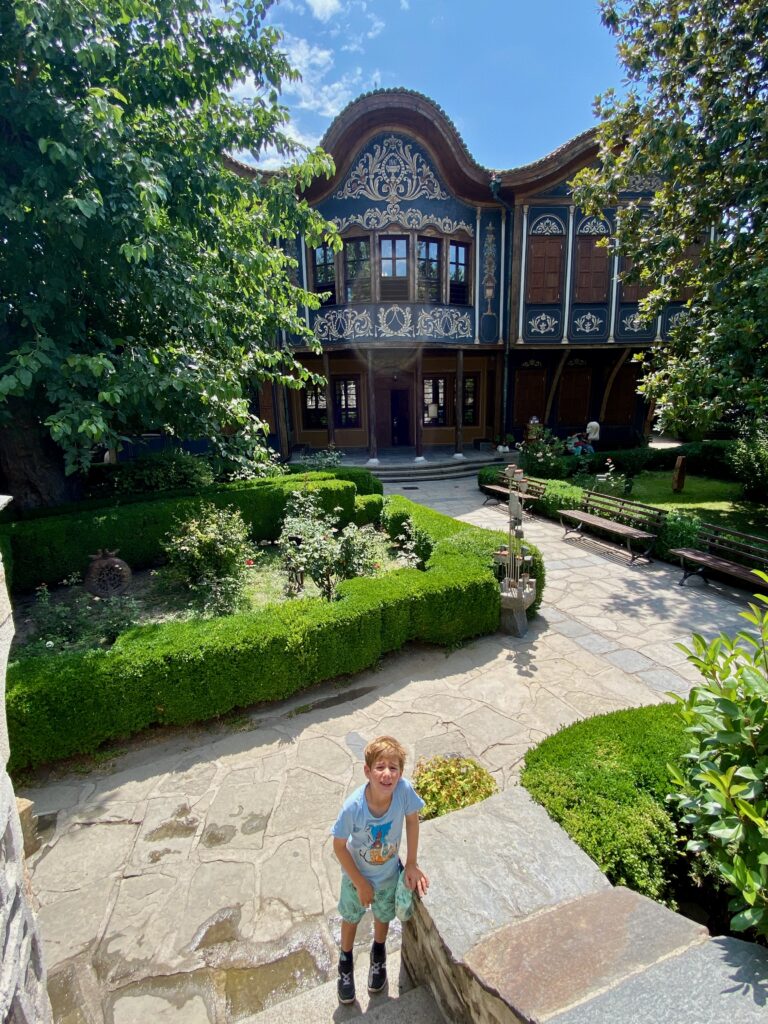
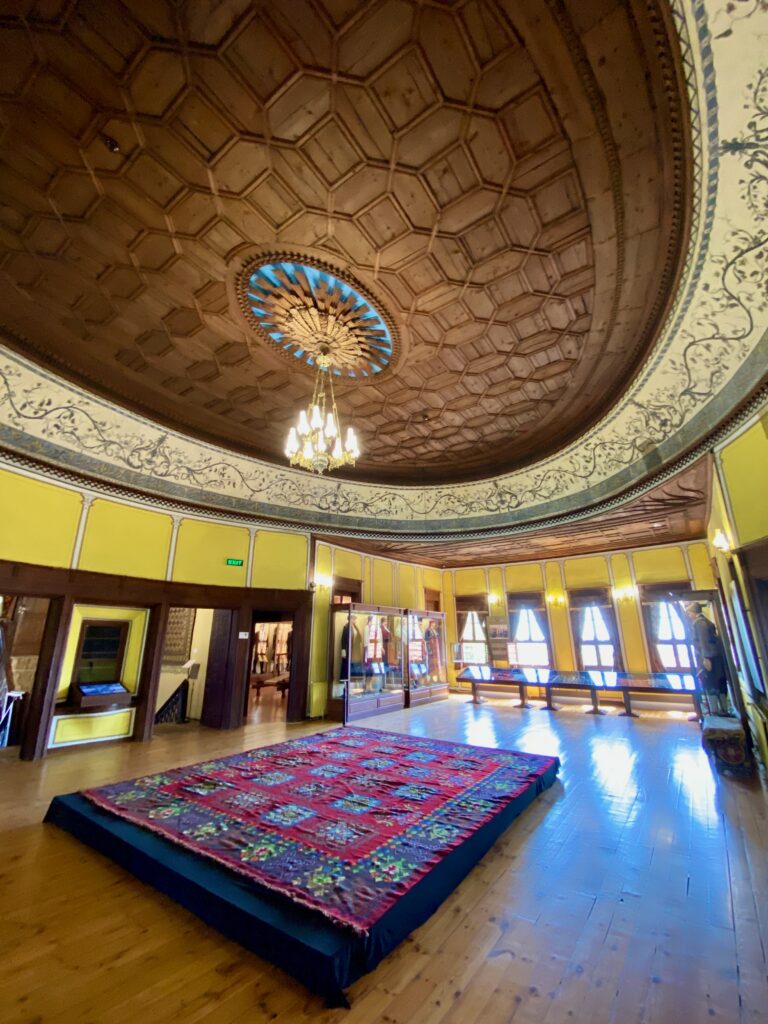


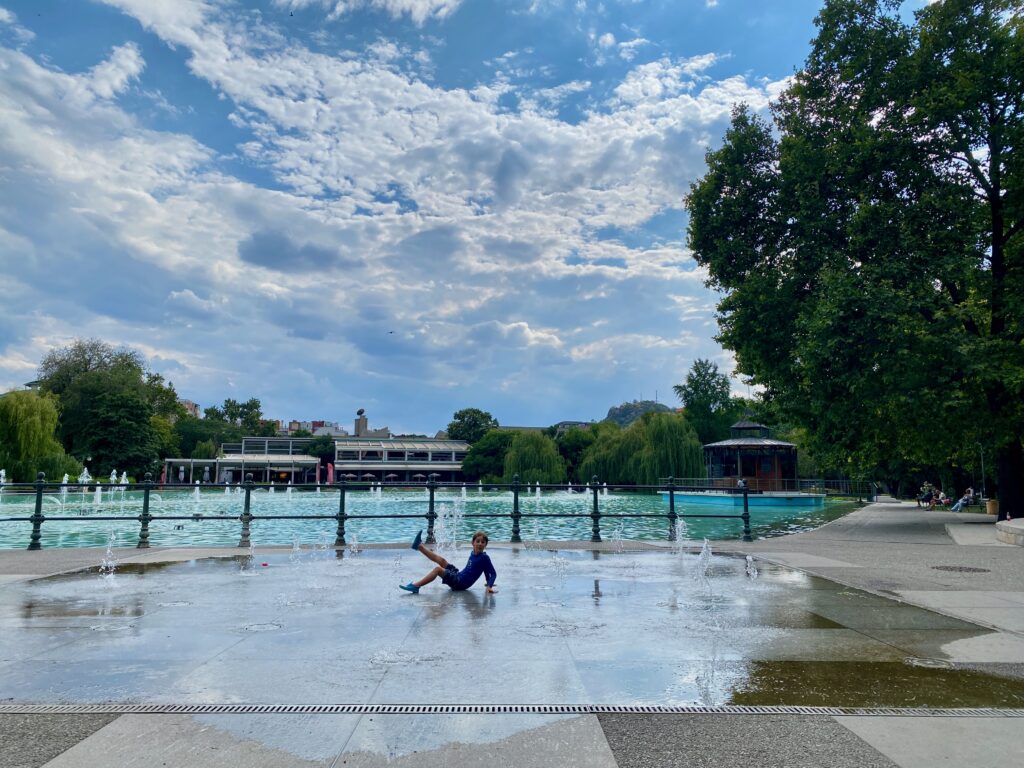

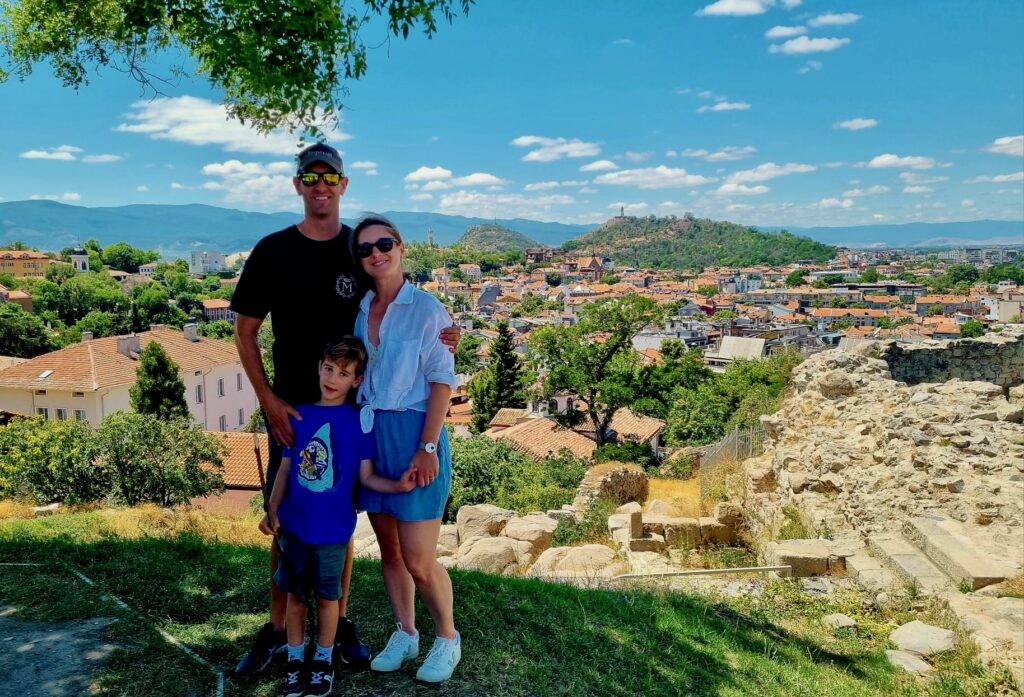
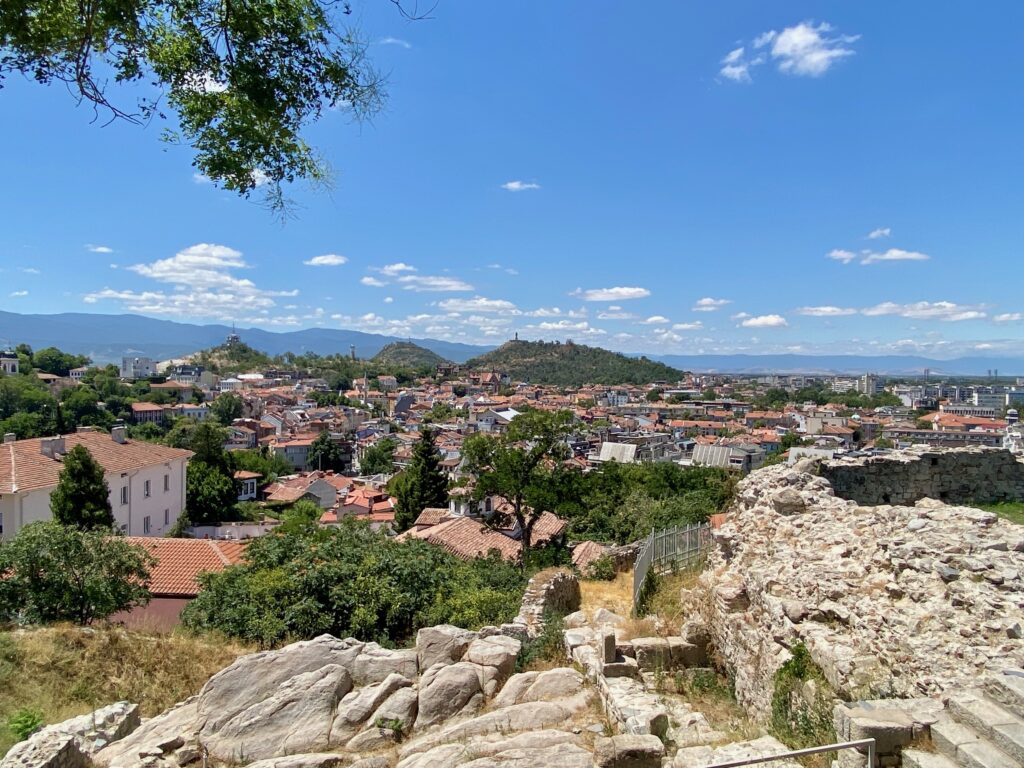

We also enjoyed exploring Kapana (the Trap), a former bazaar area with 900 shops; everything was appropriated by the government in 1944 but there was a revival after communism ended, with artists and eventually gentrification. We had some good lunches and dinners in Kapana.
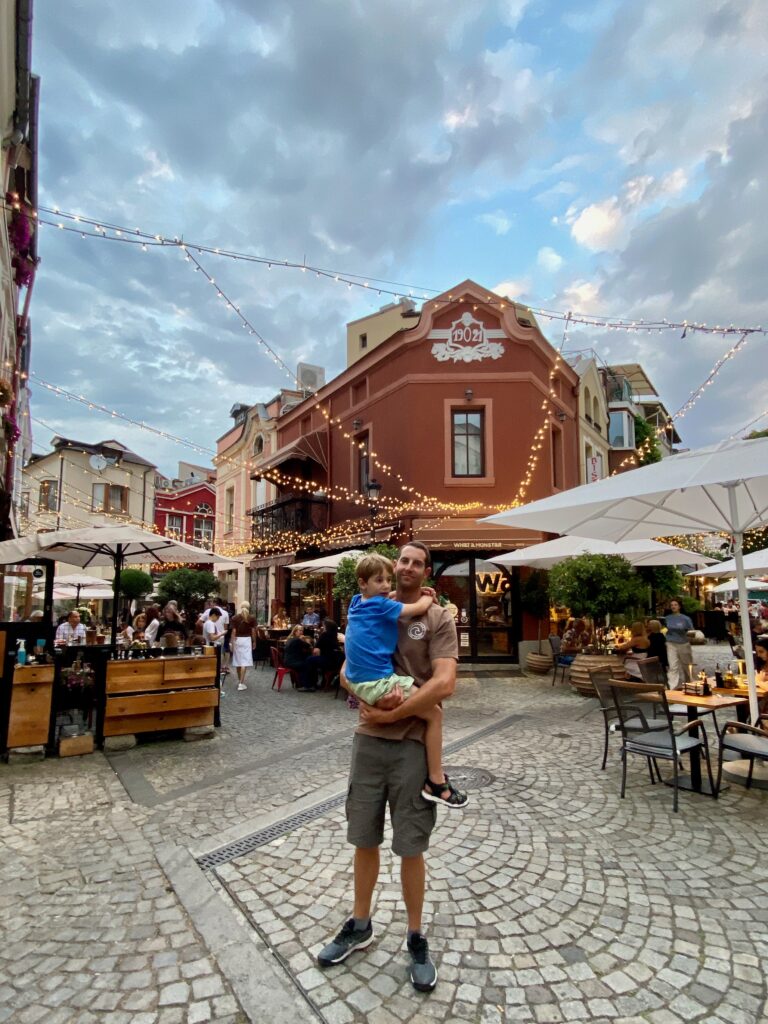
Our last stop in Bulgaria was Veliko Tarnovo, highlighted as one of the most picturesque cities in the country because there are houses perched on steep cliffs framed by a river and fortress, and also as a former capital. The town center didn’t wow us, mostly because the main street (the only thoroughfare) is inevitably and heavily trafficked; on the heels of beautifully pedestrianized Plovdiv, this was a bit of a disappointment and annoyance for the visitor. Windy streets going down into the valley were a bit easier, if steeper, to wander. The Byzantine-era Tsarevets fortress is the main attraction and you can hike to the top. Our city tour in Veliko Tarnovo was unique in that we were among a Pole, a Russian-supporting Ukrainian, a Bulgarian with mixed heritage, and a Bulgarian native tour guide who was somewhat nostalgic though circumspect about the days under communism: this made for some tense but multi-faceted, illuminating discussions about politics, economics, and European immigration.



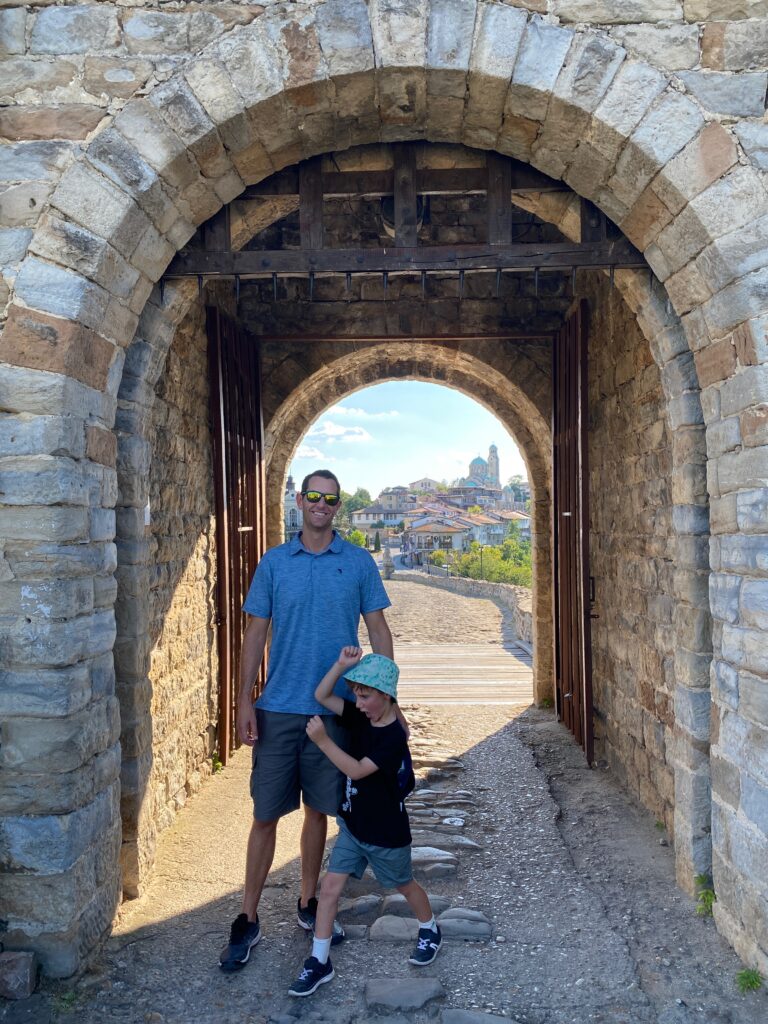
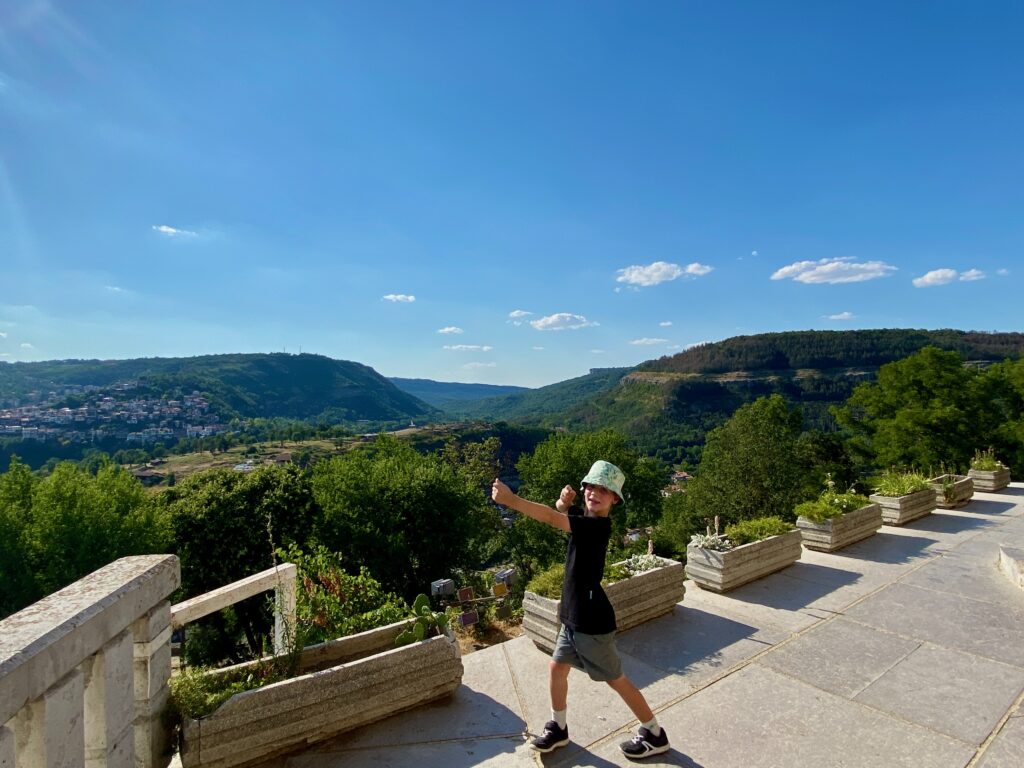
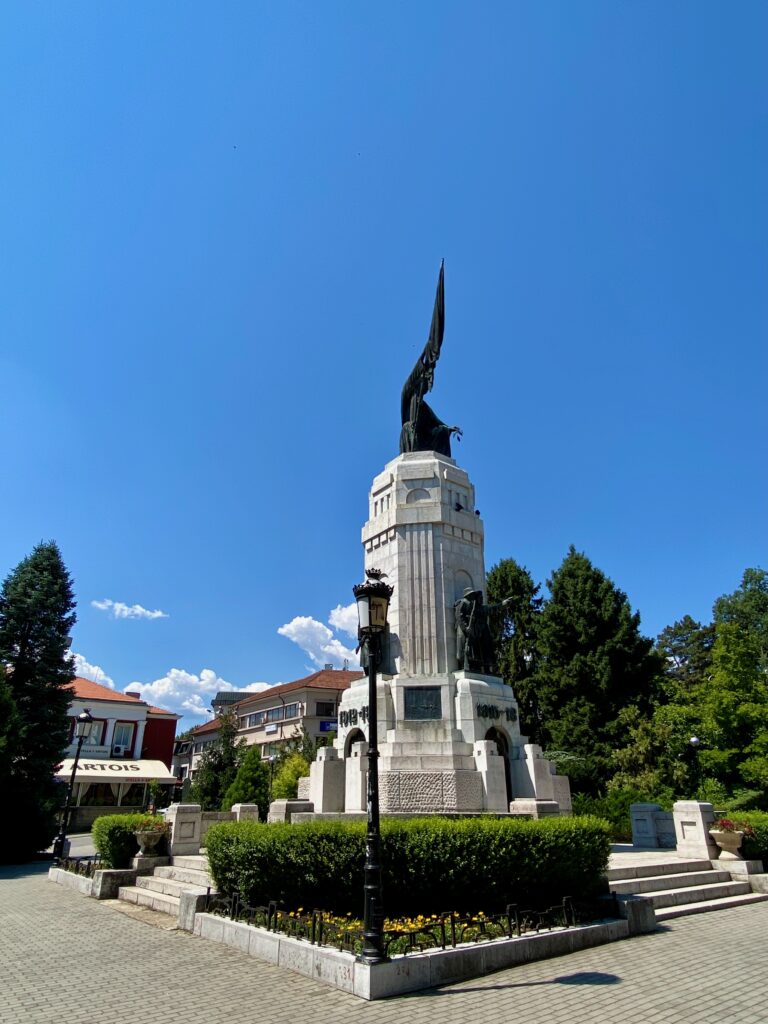
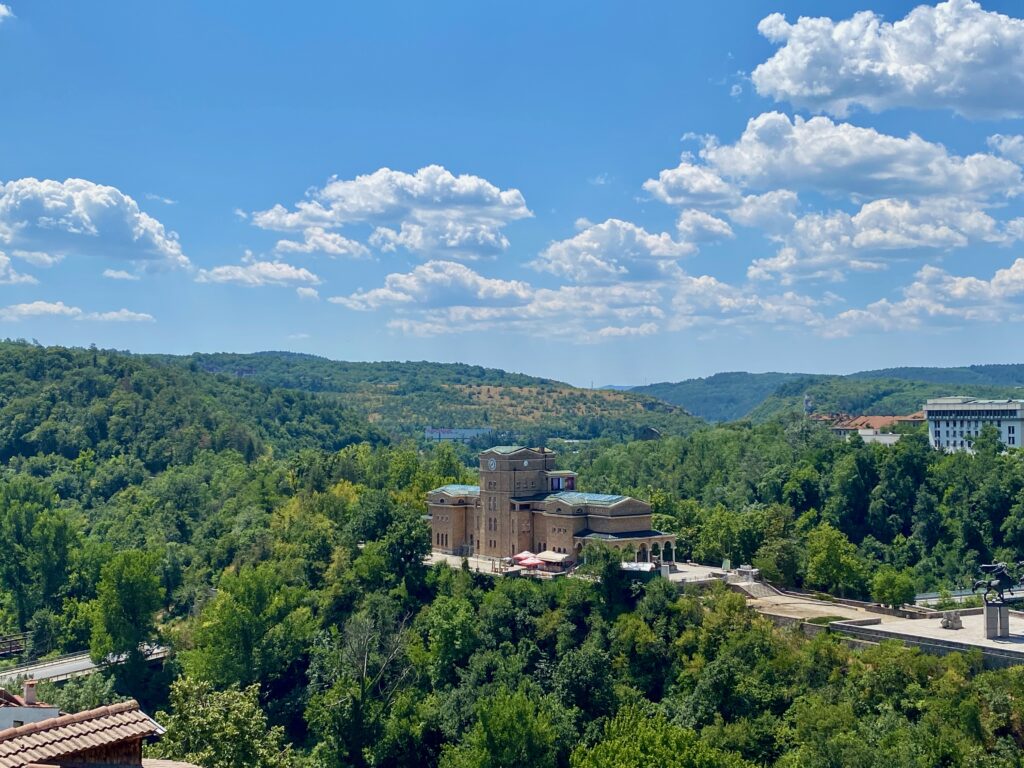
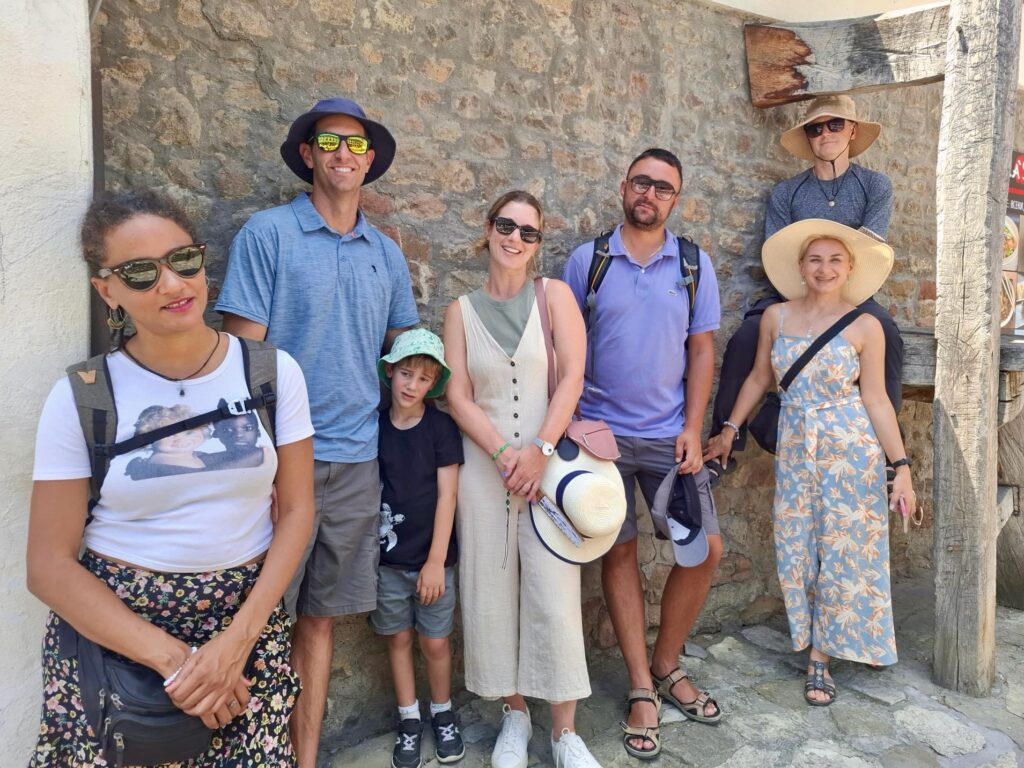
Finally, we caught some live music at Veliko Tarnovo’s version of the Hollywood Bowl, a Balkan pop/Bulgarian folk dancing outdoor concert where we understood not a word but Jacob danced anyway!

Onto Romania!
